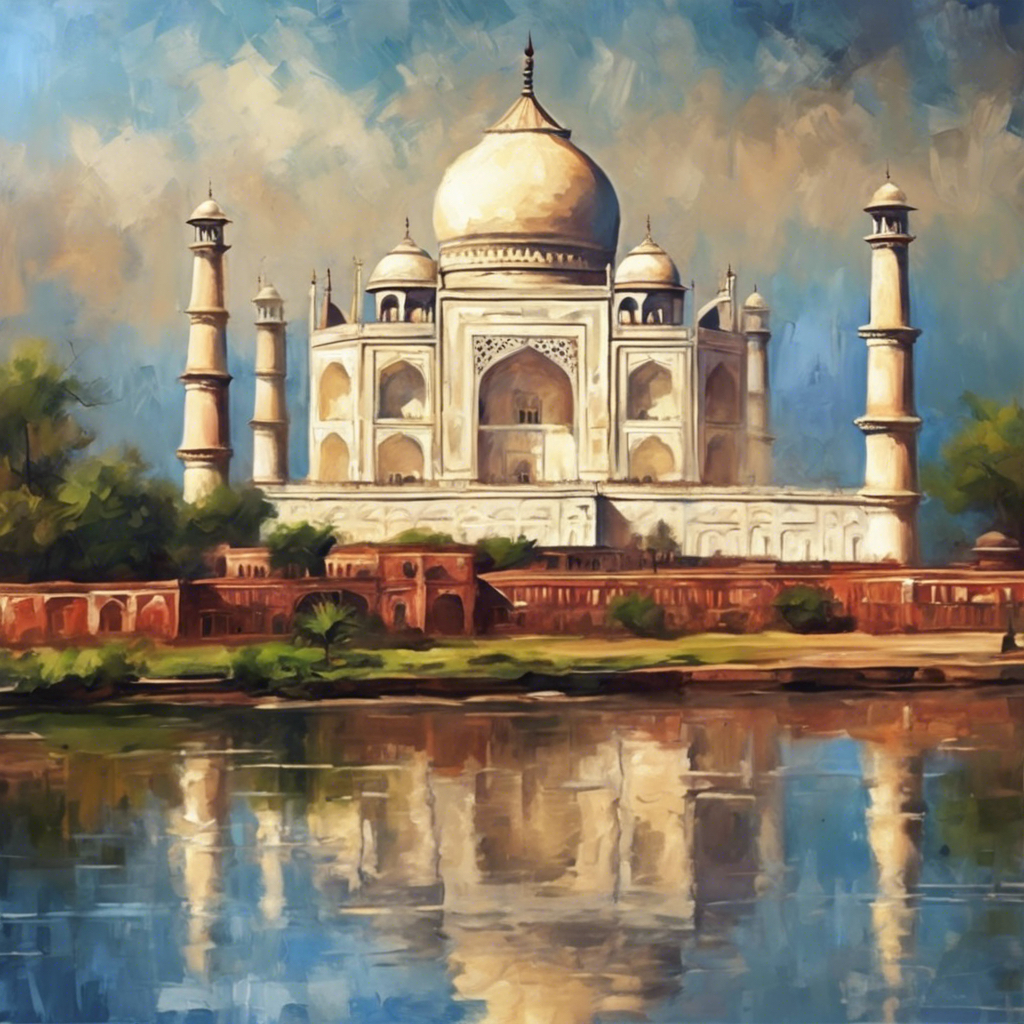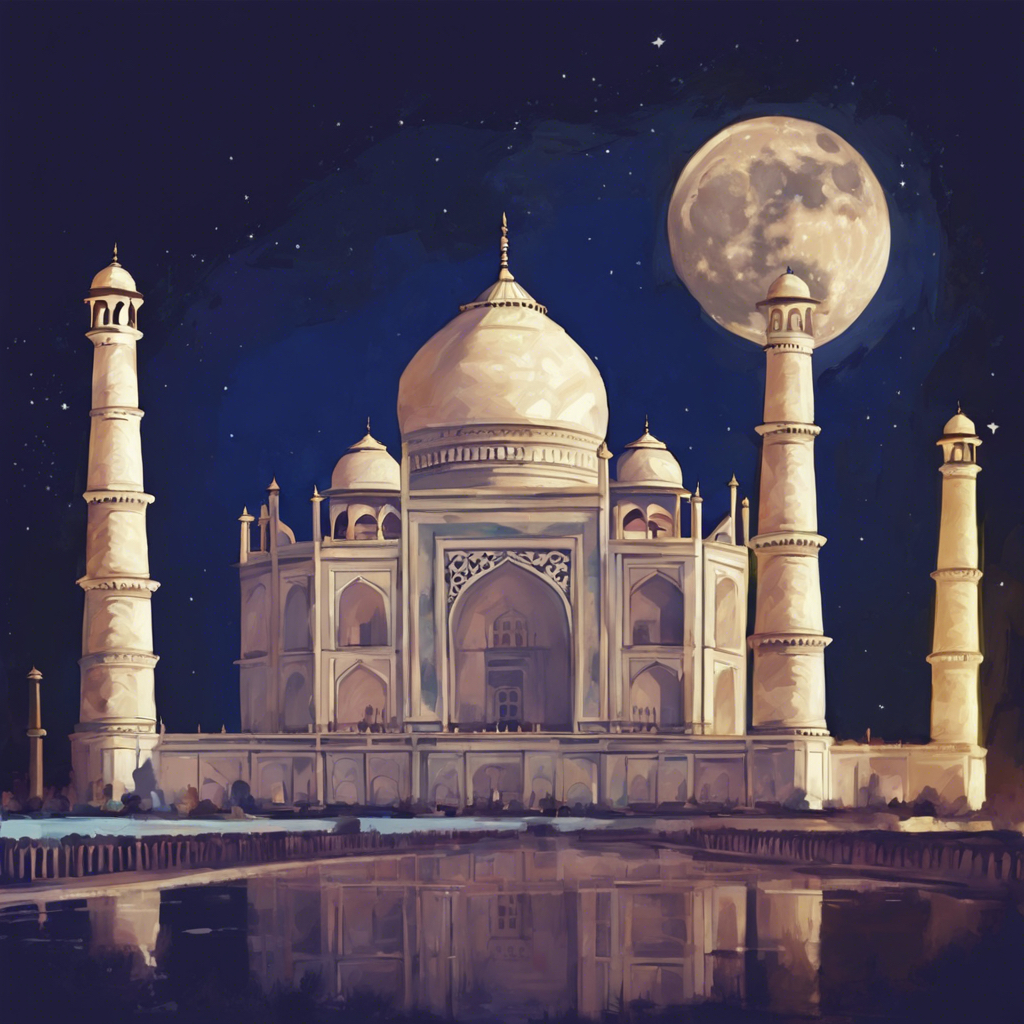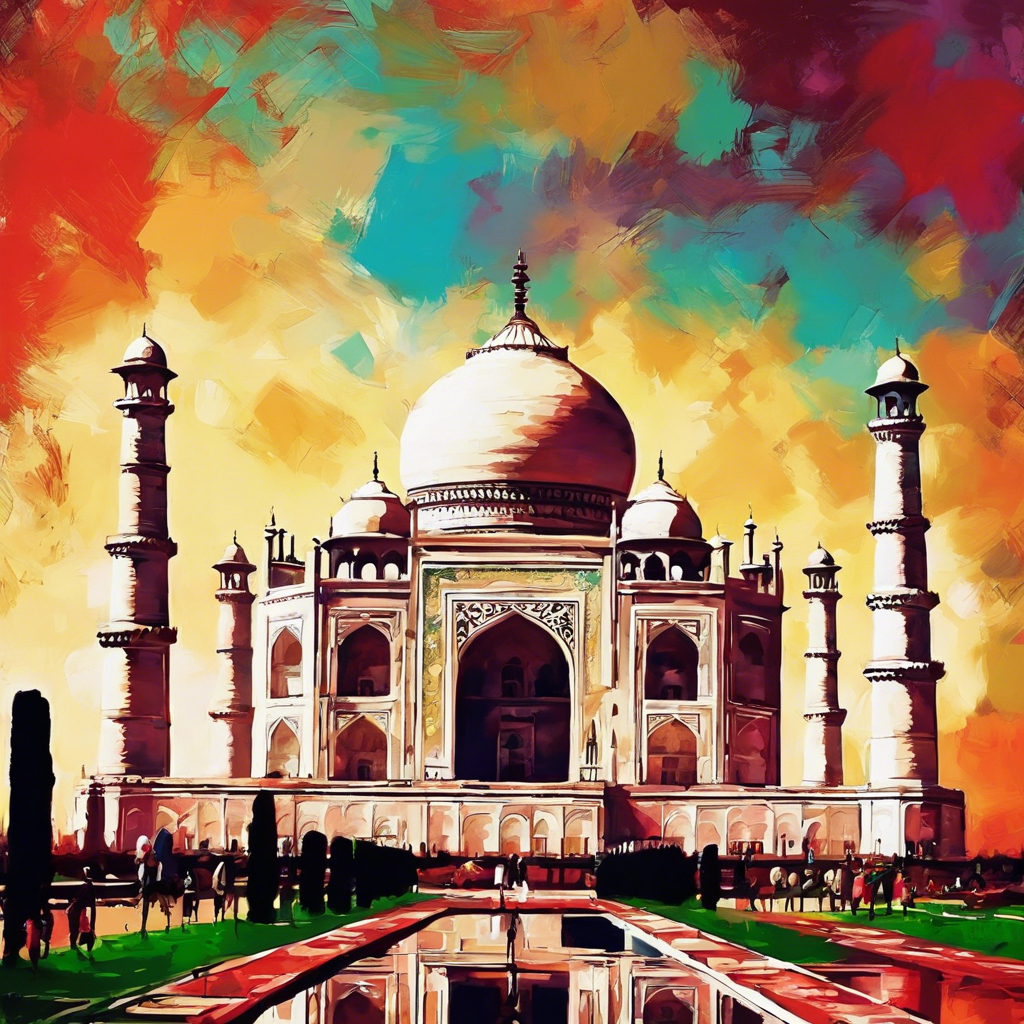The Taj Mahal, an iconic monument of love and architectural brilliance, stands as a testament to the enduring power of human emotion. This magnificent mausoleum, located in Agra, India, is a UNESCO World Heritage Site and one of the most recognized structures in the world.
A Monument to Love
The Taj Mahal was commissioned by Mughal Emperor Shah Jahan in memory of his beloved wife, Mumtaz Mahal. Construction began in 1632 and was completed in 1648, employing thousands of artisans and craftsmen. The white marble mausoleum, with its intricate carvings and stunning inlay work, is a masterpiece of Mughal architecture.
Architectural Marvel
The Taj Mahal is a harmonious blend of Islamic, Persian, and Indian architectural styles. Its symmetrical design, with its central dome, four minarets, and surrounding gardens, is a testament to the Mughal Empire’s artistic and engineering prowess. The white marble facade, adorned with intricate pietra dura inlay work, shimmers in the sunlight, creating a mesmerizing spectacle.
The Gardens of Paradise
The Taj Mahal is surrounded by extensive Mughal gardens, inspired by the Islamic concept of Paradise. These gardens are meticulously landscaped with fountains, pools, and flowerbeds, creating a serene and tranquil atmosphere. The Charbagh, or four-quartered garden, is a central feature of the complex, symbolizing the four rivers of Paradise.
A Spiritual Experience
The Taj Mahal is not just a physical structure; it is a spiritual experience. Visitors are often awestruck by the beauty and serenity of the monument. The soft glow of the marble, the intricate carvings, and the peaceful ambiance create a sense of awe and reverence.
Preserving a Legacy
The Taj Mahal faces numerous challenges, including air pollution and the impact of tourism. Efforts are being made to preserve this iconic monument for future generations. Strict regulations have been implemented to limit the number of visitors and to reduce pollution. Conservationists and heritage experts continue to work tirelessly to maintain the Taj Mahal’s pristine condition.
A Timeless Symbol
The Taj Mahal remains a symbol of love, beauty, and cultural heritage. It is a testament to the enduring power of human emotion and the artistic and engineering genius of the Mughal Empire. As one of the world’s most iconic landmarks, the Taj Mahal continues to inspire and amaze visitors from around the globe.
References:
- Archaeological Survey of India: https://asi.nic.in/
- UNESCO World Heritage Centre: https://whc.unesco.org/en/list/252
- Incredible India: https://incredibleindia.org/


